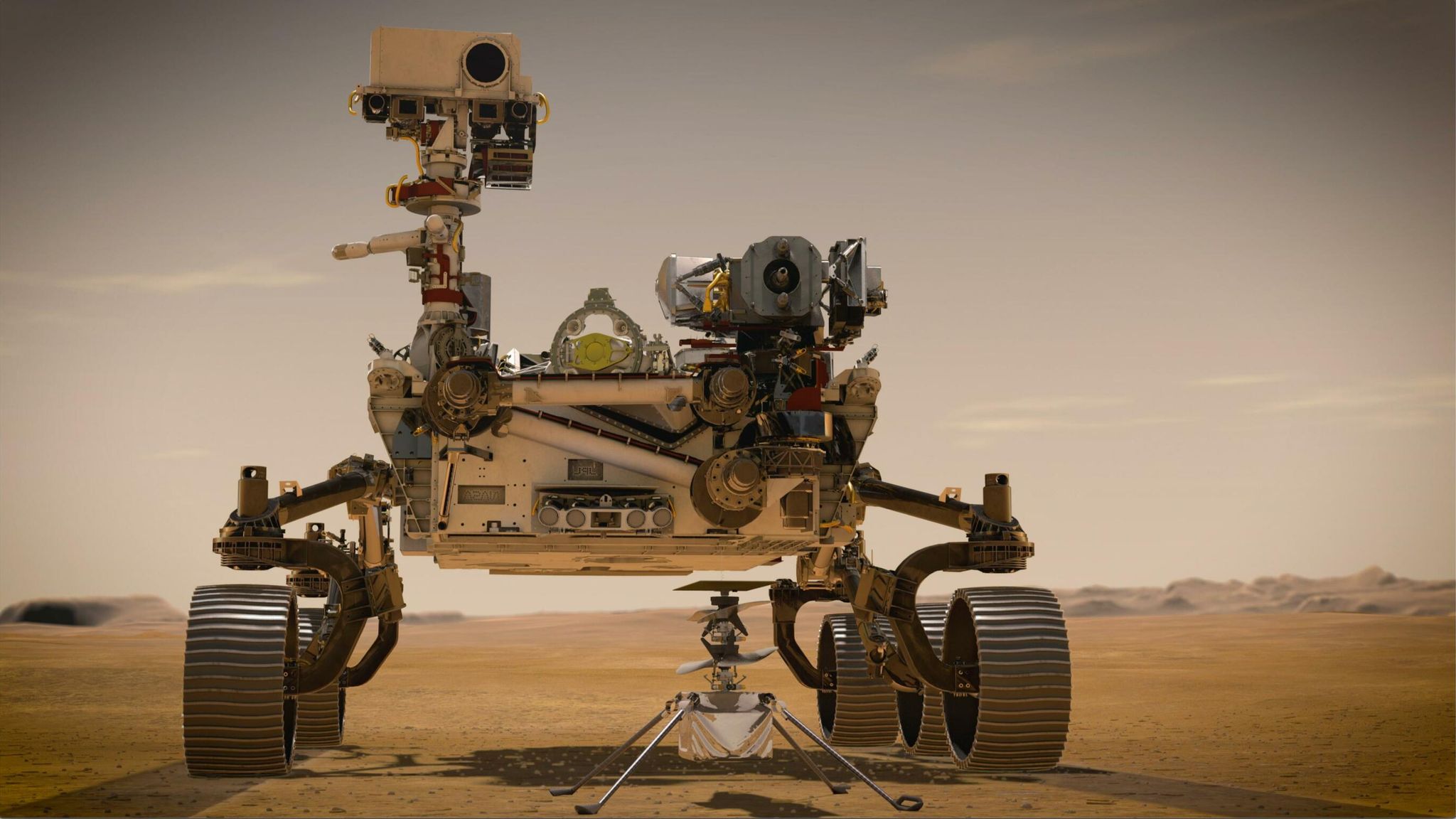

The rover will characterize the planet’s geology and past climate, pave the way for human exploration of the Red Planet, and be the first mission to collect and cache Martian rock and regolith (broken rock and dust).

A key objective for Perseverance’s mission on Mars is astrobiology, including the search for signs of ancient microbial life. A camera aboard the descent stage captured this shot. NASA has three Mars satellites still in orbit, along with two from the European Space Agency.18, 2021. Just last week, separate probes launched by the United Arab Emirates and China reached Mars orbit. The United States is hardly alone in its fascination with Mars. Its immediate predecessor, the rover Curiosity, which landed in 2012 and has far outlived its design life, remains in operation for NASA, as does the stationary lander InSight, which arrived in November 2018 to study the deep interior of Mars. Should it safely land, Perseverance will have company elsewhere on the red planet. If successful, the 4-pound whirlybird could lead to low-altitude aerial surveillance of distant worlds, JPL officials said. It would prove invaluable for future life support on Mars and for producing rocket propellant to fly astronauts home.Īnother experimental prototype carried by Perseverance is a miniature helicopter designed to test the first powered, controlled flight of an aircraft on another planet. The box-shaped tool is the first built to extract a natural resource of direct use to humans from an extraterrestrial environment, according to Lori Glaze, director of NASA's planetary science division. Perseverance's payload also includes demonstration projects that could help pave the way for eventual human exploration of Mars, including a device to convert the carbon dioxide in Mars' atmosphere into pure oxygen. Two future missions are planned to retrieve the samples and return them to NASA in the next decade. Scientists hope to find biosignatures embedded in samples of ancient sediments that Perseverance is designed to extract from Martian rock for analysis back on Earth - the first such specimens ever collected by humankind from another planet. The primary objective of Perseverance's two-year, $2.7 billion endeavor is to search for signs of microbes that may have flourished on Mars some 3 billion years ago, about the time life was emerging on Earth. Larger and packed with more instruments than the four Mars rovers preceding it, the latest mobile robotic probe would build on previous discoveries that the fourth planet from the sun was once warmer, wetter and possibly hospitable to life. missions to Mars dating back to a 1965 Mariner fly-by. NASA scientists describe Perseverance as the most ambitious of nearly 20 U.S. The entire process is set to unfold in a heart-pounding interval NASA engineers half-jokingly refer to as the "seven minutes of terror."īecause it takes radio waves 11 minutes to travel one way between Mars and Earth, the SUV-sized rover will have already reached the Martian surface - intact or not - by the time its atmospheric entry signal is received at mission control. The seemingly far-fetched sequence includes a perilous parachute deployment at supersonic speed and a rocket-powered "sky crane" designed to detach from the entry capsule, fly to a safe landing spot and lower the rover on tethers, before zipping off to crash a safe distance away.
Nasa mars rover perseverance landing series#
The multi-stage spacecraft, streaking into the Martian atmosphere at 12,000 miles per hour, must perfectly and swiftly execute a complex series of self-guided maneuvers to slow its descent, avoid myriad surface hazards and plant itself gently upright on all six wheels.

Getting Perseverance to its destination in one piece after its 293-million-mile journey, he added, is far from assured. #CountdownToMars /NsNJjXHPbu- NASA's Perseverance Mars Rover February 17, 2021 I’m looking for rocks that tell a story of past microbial life. I’ll chart a path along its ancient shoreline, to see if it’s like similar places on Earth. Tomorrow I arrive at Jezero Crater, a dry lakebed on Mars.


 0 kommentar(er)
0 kommentar(er)
